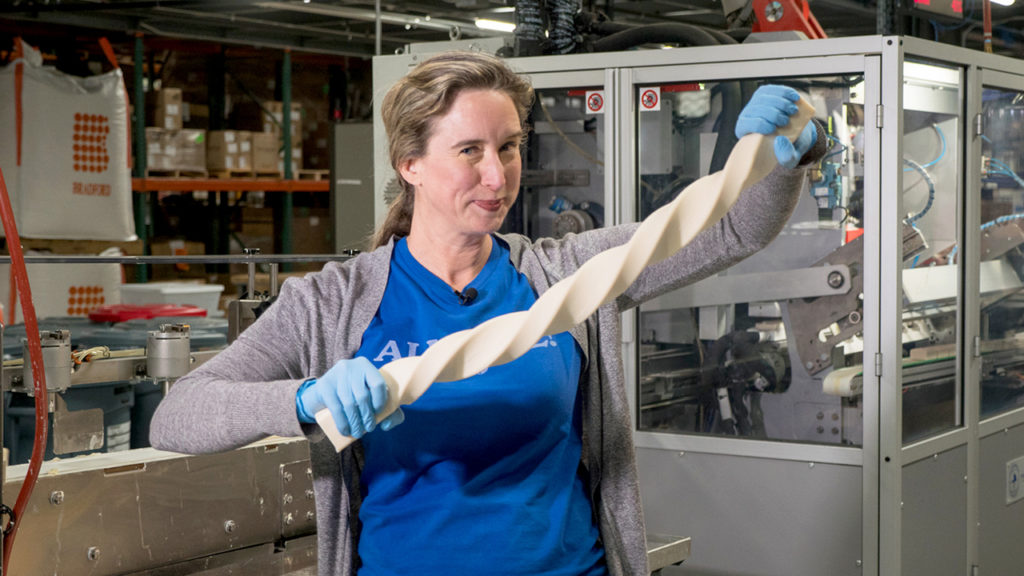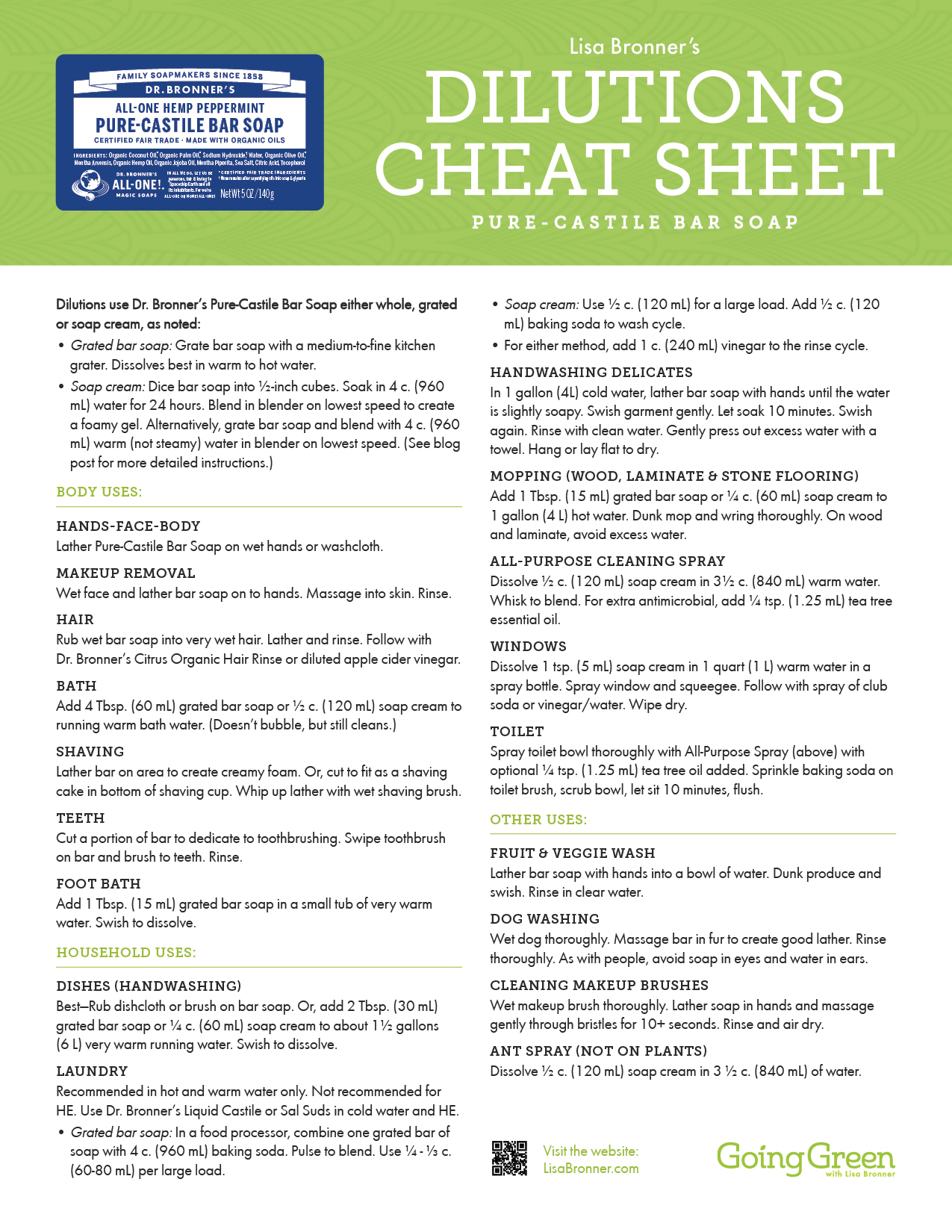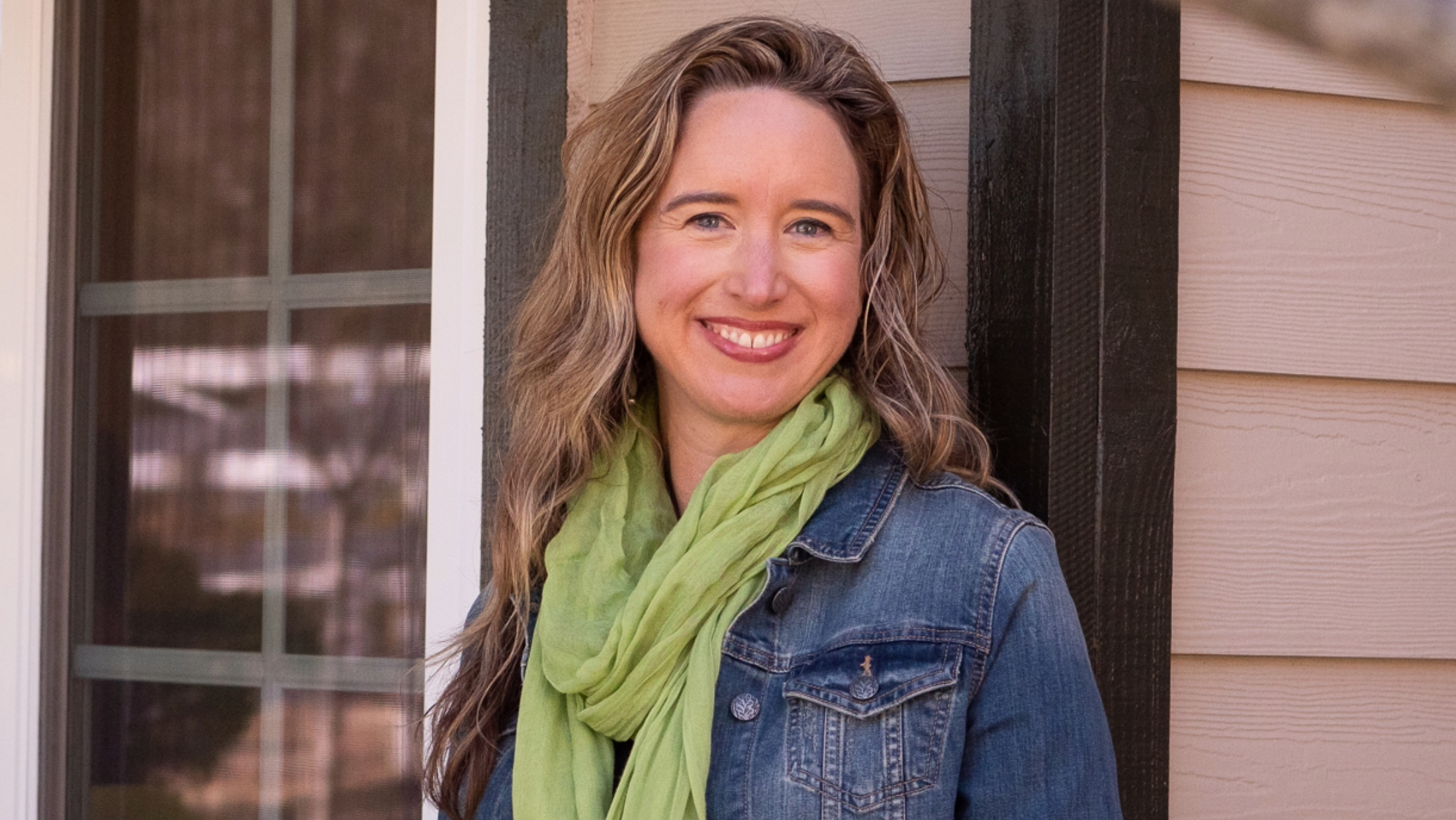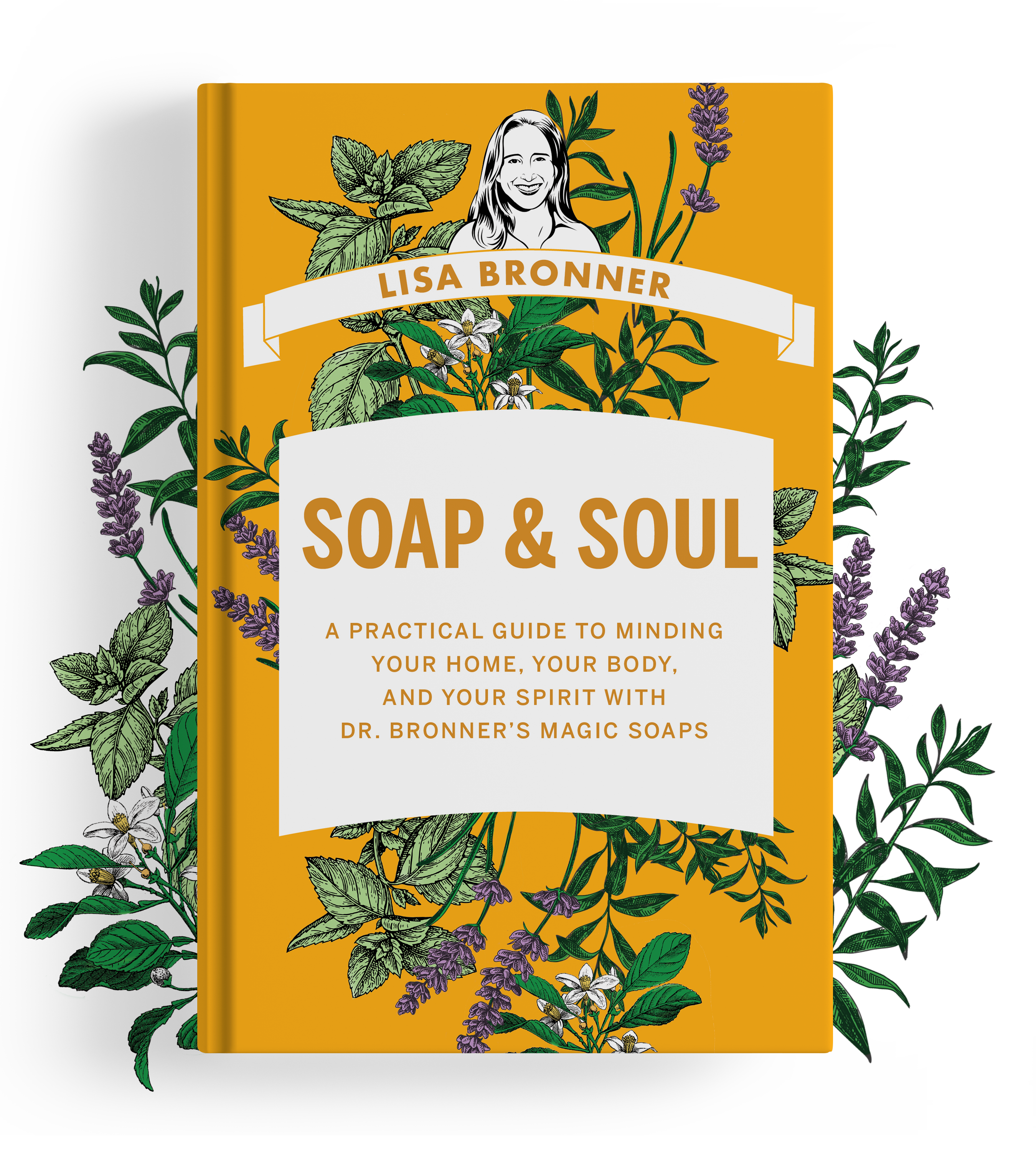
Come along with me on this Dr. Bronner’s factory tour of the Pure-Castile Bar Soap production! Making quality bar soap on this large of a scale is tricky business. Liquid soap is a cinch in comparison. With liquid, you functionally throw all the ingredients in a pot and out comes the soap. Bar soap is more complicated. The ingredients all go in as a liquid, but they need to come out as a solid! That takes a lot more doing.
That’s one of the reasons I brought you my tour of our Liquid Soap Production first, years ago, but put off attempting to explain to you bar soap production until now. Honestly, it’s a bit nerdy, but I have full confidence that you will appreciate it just as much as I do. After all, chemistry is gorgeous.
The Chemistry of Bar Soap
Because bar soap production happens inside a closed system, I can’t show you the chemistry in action, so I’ll have to describe it for you. Inside the tubular reactor in the video (does “tubular” make anyone else think of the Ninja Turtles?), I want you to envision a collision between oils and alkali which blasts apart all the molecules so that they reorganize as soap, glycerin, and water, with nothing leftover. It’s so efficiently beautiful! A few more ingredients get mixed in to the liquid before it begins the process of drying out. First, most of the water content is extracted in a vacuum chamber as a vapor. The water vapor runs through the cyclone separator so that any soap content that got caught in it can be pulled out and the water can be treated for reuse. The remaining soap then gets cut into “noodles,” which you see in the video, and it continues to dry as it cures in the supersacks. Personally, I think the soap noodles look like cheese curds.
The essential oils don’t get added until the finishing line. When you buy essential oils for home use, they usually come in a 1-ounce bottle, or possibly smaller. We buy them in 55-gallon drums, which is equal to 7040 ounce bottles, and can cost over $20,000!
So sit back and enjoy! Be hypnotized by the honeycomb screens. Get mesmerized by the stamper. I hope you’ll agree with me that soapmaking is really nifty!
Further reading
- Want more soap chemistry? Check out my article “How Soap Works.”
- Asking how the Bar Castile differs from the liquid? Read my article “Liquid vs. Bar in Dr. Bronner’s Castile Soap.”









Can I come to your store or factory in Encinitas?
Hi Terri- Unfortunately our facility is not opened to the public – it’s way too busy.
Do you have live tours to the public of the factory?
Hi Christine- No, unfortunately we are not able to offer tours.
I began using Dr. Bronner’s liquid soap in the 1970’s. I have also been into recycling and being as green as possible. I really liked that I could buy them in a gallon jug so I could use fewer plastics and actually I reused those plastic jugs to hold water and fish emulsion for wartering my plants. I love that they have essential oils in them. I have used them for hair washing, body washing, cleaning my home and I JUST learned that I can use Dr. Bronners for my laundry washing-go figure! I ony wish I was closer so I could bring my granddaughter to the factory for a tour. Best wishes!
Hi Donna – It’s so great to hear your history with my family’s products! I’m glad they’ve been such a help to you. Even if you lived closer, we do not have public tours of our factory because we don’t have the space for it. But I hope you enjoyed my video tour!
This video was fun. I love the bus 🚎 and the fact that the soap 🧼 is multi purpose!
Wow! That tour was really interesting! Thank you guys so much for making that and sharing it.
wow!! that is awesome and very impressive. And I love your soap!
I have just started using the unscented bar soap and I really like it.
Thank you for a clean product!
I did notice some other websites with comments like Castile bar soap and liquid soap clog the shower drains as they are made with cold pressed oils.
Is that true?
Hi Purvi – I’m so glad you’re enjoying the soaps! The oils we use in the soaps are nearly all saponified, which means turned into soap, so they are no longer contain significant amounts of actual oil molecules. The only exception to this is that there is a bit of hemp and jojoba oil added after saponification to the bar soap base in order to “superfat” the soap and make it more nourishing on the skin. But this is not at an amount that will solidify or clog drains. Other possible causes of clogged drains are combining the soaps with other compounds, such as Epsom salts or vinegar, both of which cause a chemical reaction that creates a solid residue. Of course, drains get clogged from our hair and other things, too.
What a fun video! Love your soap!
My 3-year-old loved watching the bar soap tour video!
Hi Arti – Those machines are seriously entrancing!
I really liked seeing the operation of how the products we buy are made. Makes me want to even support you more. Keep up the great job doing running this business!!!God Bless and Be Proud!!!
This was fantastic!!!!! Thank you SO much, Lisa, for taking the time to make this video!! ANYTHING Dr. Bronner is “da bomb”!!!
Amazing, thanks for sharing.
It’s nice to be able to see the process for making the products that keeps me so fresh and so clean! I use Dr. Bronner products because of the purity and ease of use. I honor my body and honor this company for keeping the ingredients clean and toxic free. I’m definitely a FAN!
Awesome, thank you. I love seeing how things are made.